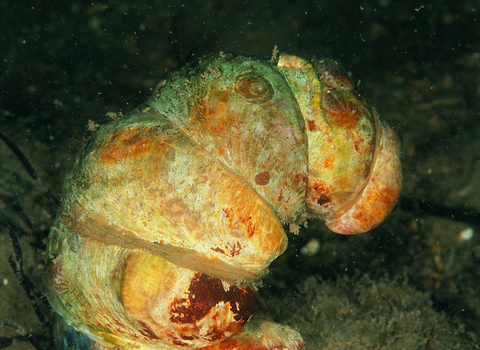
Slipper Limpet ©Paul Naylor
Slipper limpet
These non-native limpets arrived from America in the 19th century and are now widespread in the UK. They form stacks and have a specially adapted shell which, when flipped upside down, looks like a slipper!
Enw gwyddonol
Crepidula fornicataPryd i'w gweld
January to DecemberSpecies information
Categori
Ystadegau
Length: 5cmCommon, but a non-native species.
